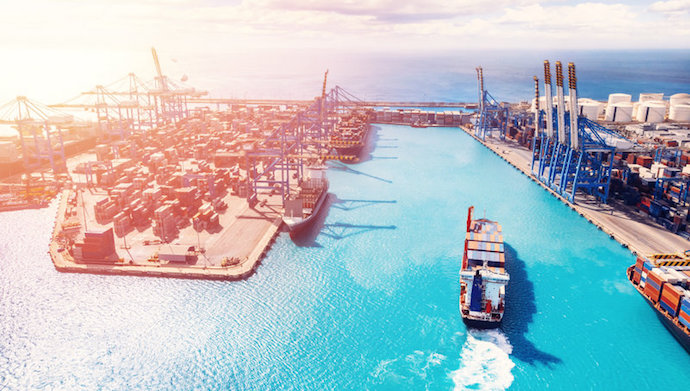
Asia’s supply chain has shown itself vulnerable to disasters, diseases, and, increasingly, climate change as the world’s manufacturer. The imperative for companies today is to reimagine supply chain planning in a new, climate-affected reality that considers the unprecedented level of uncertainty to their forecasting.
More than ever, companies can no longer rely simply on historical data to predict the future; they need to shift their mindset around employing data when it comes to the role of the supply chain in their company’s future.
For example, during US Vice-President Kamala Harris’ recent visit to Singapore, supply chain changes and challenges had top billing. She gathered with business leaders to discuss the importance of public-private partnerships to rebuild and strengthen supply chains.
As we wrestle with the basics, such as ensuring our families have continued access to various food types, toiletries, and other everyday household items, we intrinsically know that forecasting accuracy and analysis for business has never been more vital for regaining some level of certainty.
Omnichannel engagement is making end-to-end visibility crucial for CSCOs
In fact, according to the 2020 World Risk Index that examined the ability for countries to prepare and adapt to extreme events, all countries in our region fared poorly, with Southeast Asia being called out as a hotspot of disaster risk.
Another study from the Economic Research Institute for ASEAN and East Asia (ERIA) on supply chain resilience found that companies are now more concerned about external shocks than in previous decades.
Yet, the reality is that to do this, Chief Supply Chain Officers (CSCO) need to have end-to-end visibility across the network for crucial decision-making.
Also Read: Vietnam’s supply chain amid worst COVID-19 outbreak: How tech startups are getting along
A pre-pandemic survey by Peerless Research Group conducted on behalf of Anaplan reveals that 46 per cent of respondents said they struggle with visibility with supply chain partners, and 76 per cent are having trouble integrating their systems.
If such large portions of respondents lack easy access to accurate, time-sensitive information, how can they effectively manage their supply chain in today’s tumultuous landscape?
As omnichannel strategies have become the default in reaching end customers, CSCOs need to work across the business today to take a finance-led approach to better assess supply chain risks.
By doing this, they are better positioned to consider significant events like disasters or extreme climate-related events and blend that supply chain thinking to bring back the basics for driving operational performance.
Diversification of the supply chain increases complexity for organisations
China is expected to continue being a dominant global manufacturing hub for the foreseeable future. However, as more companies adopt a “China plus one” strategy to diversify their supply chain to avoid being over-reliant on any one market, they need to start considering other factors that may affect their operations, such as the increased costs, the reduced influence over current suppliers, regulatory requirements, and so on.
Even as companies attempt to improve communication with greater stakeholders and oversight of internal and external stakeholders, managing these and other functions become more complex as more supply chain partners are added to the network.
Also Read: 5G and the 5 new things it will bring to the world of logistics
Large manufacturing organisations will find it harder to gain optimal operational efficiencies. How do you connect this network of suppliers in your ecosystem so that it still makes financial sense?
We have supported many customers as they navigate through the options for alternatives. For example, one of the lines of business of a large global entertainment company; in their APAC operations, they use Anaplan to model supply chain collaboration options to connect with other suppliers and factories.
Another customer, a large retail group that operates several well-known brands across food, personal health and beauty and household furnishings, needed a central solution to manage the replenishment planning across the group. Our solution enables the organisation to shift and change our suppliers to ensure demand is met and customers remain satisfied.
Digital mindset key to resilience
In addition to the above complexities, the reality of the supply chain is that many stakeholders continue to rely on outmoded technology. Even with today’s cloud-based communications tools, for instance, supply chain and logistics managers still primarily rely on inefficient tools day to day like email, landlines, fax machines and spreadsheets day-to-day.
In an era of e-commerce and omnichannel fulfilment, companies can no longer afford to be comfortable doing what they have always done.
Also Read: How a Muslim female founder is making waves in Indonesia’s male-dominated logistics-tech sector
Establishing digital supply chain systems that capture real-time inventory signals, data on consumer behaviours, and supply data across channels is vital and will help ensure workforces are set up to support sudden shifts in demand and capacity.
Regardless of how businesses think about this, today’s volatility in the supply chain is a red flag for focus. Instead of blaming this situation on the pandemic, the reality is that shifts in consumer behaviour will remain, and significant events like climate change will continue to cause demand-centric supply chain disruption and be a key area of concern for businesses.
Connectivity between the supply chain and other aspects of the business has never been more critical, as supply chain leaders and their teams are now the key drivers of commercial execution and excellence for most organisations.
–
Editor’s note: e27 aims to foster thought leadership by publishing views from the community. Share your opinion by submitting an article, video, podcast, or infographic.
Join our e27 Telegram group, FB community, or like the e27 Facebook page
Image credit: parilovv
The post Asia-led global supply chain needs to reinvent itself to address climate change appeared first on e27.

